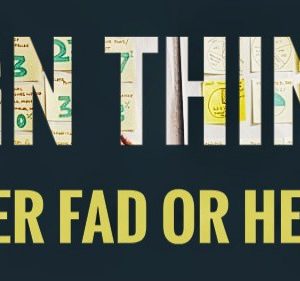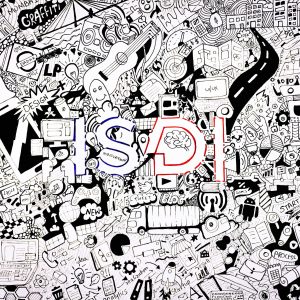A GUIDE TO MOTION GRAPHICS
Do you have a favorite video, font, animation, or audio? Do you get excited when you see the Marvel logo on screen? Put all that together and what you have is motion graphics.
You’ve made some infographics for your projects too, right? Yes, you guessed it, that is also a part of motion graphics. This was only the gist. Motion graphics are capable of much, much more.
Now, let’s find out the meaning and power of motion graphics!

WHAT IS MOTION GRAPHICS?
Motion graphics is a form of animation with text as its main component. The making of these graphics requires the use of multimedia technology. In simple words, it is also called animated graphic design. It is represented through online media to reach out to a target audience as it provides an interactive visual aid. It has all the components that are required to catch someone’s attention.
Did you know?
Motion graphics have existed since the 1800s, presented in the form of flipbooks! The flip books are an early form of animation, including texts that created an illusion of motion. This illusion is the backbone of motion graphics.
Animation in motion graphics
When one of the main concerns is to create movement in the content is where motion graphics animation plays a part. This type of animation is different from traditional animation used in Disney movies. Animated movies are more fanatical whereas graphic animation is designed to make people connect to you in real life.
A lot of branding is done through motion graphic design for this particular reason. This sort of design attracts very large audiences in a lot of fields like movies, advertising, marketing, audio-visual activities, etc. The intro you skip on Netflix is one of the few examples of motion graphics in films.
TYPES OF MOTION GRAPHICS
The scope of motion graphics is an open sky, it is flexible and offers a lot to work with. Motion graphics allow you to tell stories. With the use of so many mediums, these graphics help you convey the information you want conveniently and interestingly.
Here are some types of motion graphics that can rock your world:
-
Animated logos:
Creative and simple logos can get the attention of a big audience. Straightforward logos promote the brand in a very quick and easy manner.
-
Explainer videos:
A 2D explainer is used to describe and promote a complicated and comprehensive concept that might be difficult through an infographic or brochures. This makes it easier to advertise your brand. Audio recordings, text fonts, and animation are all combined into these videos.
-
Product animations:
These graphics are solely focused on the product. The illustrative aspect depicts the products in a short yet sufficient summary. It maintains the graphics as informative and interesting.
-
Animated typography:
The use of moving animated texts keeps one engaged and entertained. These moving texts take only a few seconds of screen time and they can bring attention to your brand’s name. It is also a form of explainer video, so you can also add voice overs!
The different types of motion graphics give you a lot of opportunities to explore how to advertise or promote your brand. Motions graphics are also used for entertainment like short films and even your favorite cat gifs!
WHAT DO MOTION GRAPHIC DESIGNERS DO?

The responsibility for this creative content falls on the shoulders of motion graphic designers and they carry it pretty well. So let’s go ahead and find out what it is that they do!
These are the set of skills that motion graphic designers use:
-
Artistic and creative pursuits:
The motion designer-artist uses their knowledge of art and design to create motion graphics. One of the most important tasks is to conceptualize ideas and turn them into designs that are understandable and appealing.
-
Experience in animation:
Animation is a necessary skill that all designers have as these graphics represent reality. Background in 2D and 3D is usually considered helpful if you’re planning to become a motion graphics designer.
- Teamwork with clients:
Motion graphics uses different types of media so designers have to cooperate and communicate with other departments for better performance on their products and work. Good listening skills help you understand all kinds of ideas and work on them in a way that benefits everyone.
These skills help them move forward and contribute toward advancing motion graphics in all kinds of media.
If we have struck your interest and if your fingers are tickling to know the process of making motion graphics, follow these steps and see for yourself!
STEPS OF MAKING MOTION GRAPHICS
-
Step 1 –
Try to tell a story through your script, be careful about your specifics like fonts, voiceovers, and animations as they will be presenting your story.
-
Step 2 –
Create a storyboard so you can have your ideas visually. It is the best way to brainstorm ideas.
-
Step 3 –
With the help of your sketches on your storyboard, you can start designing your graphics!
-
Step 4 –
Motion graphic designers use software like Adobe Photoshop, Adobe Premiere, Adobe Illustrator, Maya, etc.
If you’ve gotten to the end of this article. We’re sure you share interest in motion graphics, and you wish to pursue motion graphics or graphic designing as a career. We know what your first question is going to be.
“What is the scope of motion graphics in India?”
The future of a motion graphic artist is beaming! As technology is advancing, there is more need for designers than ever. You can join business organizations for the work of explainer videos. Software firms also like to hire motion graphic designers for their non-entertainment projects. It doesn’t just end there, you can even freelance with multiple clients and work on individual projects.
It is never too late to learn so go ahead and explore your options as a designer. We believe in you and we’re here!
How can ISDI help:
Are you ready to shake it up and be a motion graphic designer? Learn how to collaborate images, videos, audios and animate, all-in-one with us!
ISDI offers various design programs such as Graphic designing, Fashion Design, Fashion Communication and Styling, Strategic Design, Communication Design, Product Design, and Management. Pursuing one of the degree programs, that is, Bachelors in Design (BDes) – 4-year program or Postgraduate In Design (PGDI) – 11 months program. Either of the programs is an alternative to a career in design.
The ISDI campus is located in the business district of Mumbai, the commercial center of India. ISDI consists of a curriculum that is based on that of the Parsons School of Design, experienced and industry-leading faculty, and practical project-based training, all situated on a state-of-the-art campus. ISDI is just the right place for someone looking to start a career in design.
“Design is intelligence made visible.”








